Addressing the Global Plastic Waste Crisis
At a roundtable dinner hosted by The Atlantic, industry experts gathered together to discuss the possible solutions for combating the ever-growing plastic waste problem.

Over the years, plastic waste has become a hot topic of discussion. More recently, that conversation has heated up as companies make commitments to use less plastic or recycled plastic in their products, groups try to remove the ample amount of plastic in the waterways and China enforces its National Sword policy.
These topics, along with many others, were discussed during a roundtable dinner hosted by The Atlantic in Washington, D.C., on December 12. Attendees of the dinner included Brad Ack, senior vice president, Oceans World Wildlife Foundation; Emily Akhtarzandi, managing director, AtlanticLIVE; Steve Alexander, president, Association of Plastic Recyclers; Nicole Camilleri, packaging technical applications group specialist, Nestlé USA; John Caturano, national recycling manager, Nestlé Waters North America; Kelly Cramer, lead How2Recycle program, Sustainable Packaging Coalition; Kate Daly, executive director of the Center for the Circular Economy, Closed Loop Partners; Jim Foster, president and CEO, Anacostia Watershed Society; Miriam Goldstein Director, Ocean Policy, Center for American Progress; Keefe Harrison, CEO, The Recycling Partnership; Barbara Hendrie, regional director, North America United Nations Environment; Daniel Jhung President, beverage division, Nestlé USA; April Martin, co-chair, DC EcoWomen; Julia Roberson, vice president, Communications Ocean Conservancy; Michelle Romero, national director, Green for All; Steve Russell, vice president, Plastics Division American Chemistry Council; Mallory Szczepanski, editorial director, Waste360; Matt Thompson, executive editor, The Atlantic; and Steve Toloken, news editor, Plastics News.

Here is a brief overview of some of the main topics discussed during the event.
Tackling Marine Pollution
Marine pollution was the first topic brought up at the roundtable dinner. Roberson kicked off the discussion by sharing that the conversation around ocean plastic “has just exploded” and that she can’t even open her Facebook feed without seeing a mention about the latest marine pollution crisis.
“I think conversations about the issue are starting to pop up everywhere because more and more people are becoming aware of the issue and they care,” said Roberson. “The issue is critical, and whether you’re skipping straws or participating in a beach cleanup, you’re making a difference and helping lead others down that path. Your personal choice won’t solve the entire problem but having that motivation to actually take action does make a difference.”
One of the biggest marine pollution cleanup efforts, led by The Ocean Cleanup, launched in September. The cleanup is of the Great Pacific Garbage Patch, a swirling mass of plastic waste between California and Hawaii that has grown to at least 87,000 tons, according to researchers.
The Ocean Cleanup began using a trash-collecting device to begin its cleanup efforts but just recently announced that the device has to undergo a revamp because it was having trouble holding on to the trash it was supposed to collect.
Additionally, the topic of the Great Pacific Garbage Patch and its reality was discussed this week in a 60 Minutes report. National Oceanographic and Atmospheric Administration's Kevin O'Brien shared with 60 Minutes that when he sailed through the Garbage Patch, he noticed an uptick in the amount of plastic he was seeing all around him, but it wasn't quite an island of trash. Rather, plastics floating in the ocean are exposed to several environmental factors that cause them to break down into smaller fragments, making them more difficult to remove.
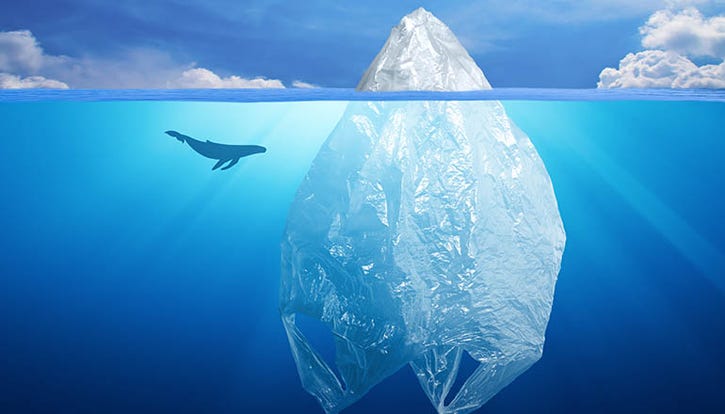
While marine plastic waste is a trending topic of discussion, there’s another issue rising to the surface at a fast pace: greenhouse gases.
“Part of everything we produce and consume has carbon dioxide, which is entering the oceans and having a major impact,” explained Ack. “There is a warming of the ocean that has a lag time and will continue over a century, a melting of ice sheets in places like the Arctic and Iceland, changing currents and sea levels and so on. The carbon and greenhouse gas are exactly parallel to plastics in terms of what’s causing the issue and who is responsible.”
While it’s up for debate whether manufacturers, companies or citizens are actually to blame for these issues, various groups from around the globe are coming together in an effort to combat the growing problem. And one of the strongest voices is the younger demographic.
Children and teens are raising awareness about ocean pollution and taking action—from launching their own campaigns, to joining cleanup efforts, to participating in events like the Ocean Heroes Bootcamp.
This year, the bootcamp challenged youths to come up with effective and efficient solutions for the reduction of plastic straws, which pollute the world’s waters and harm marine life.
“These youths and their ideas are going to save us,” said Hendrie. “They are our future.”
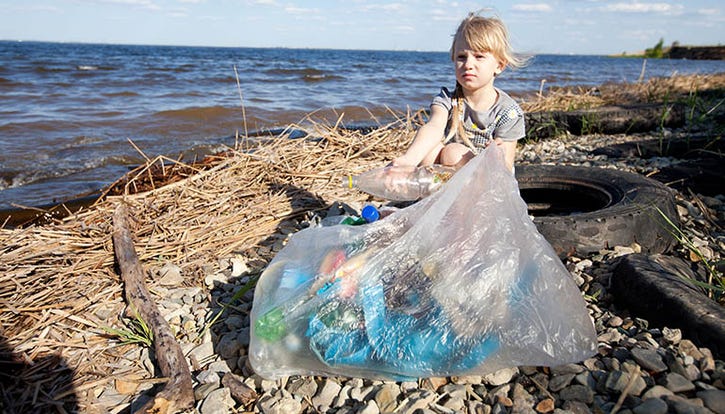
Designing for Recycling
Designing for recycling has been a hot topic of discussion this year, and it was certainly mentioned numerous times during the roundtable dinner. Industries including waste and recycling, architecture and design, manufacturing, food and beverage and so on are starting to think about recycling at the beginning of the design process, and as that is happening, more and more creative ideas are being brought to the table. But some of those ideas, while creative, may present even more recycling challenges.
“When we talk about designing for recycling, we need to focus on creating purely recyclable packages that MRFs [materials recovery facilities] and other recycling facilities are actually able to recycle,” said Harrison. “Packaging is very complex, and there can be different barriers in different types of products like bottles and food pouches. We need to overcome those barriers, and to do that, we need to be more transparent about what can and cannot actually be recycled.”
Major brands around the globe, like Nestlé, Coca-Cola, PepsiCo and Kellogg, have made commitments to use recycled materials in their packaging. And while those commitments seem great on the surface, Russell said you have to be cautious about those commitments because when companies say they want their packaging to be recyclable, what do they actually mean?
“Some companies make commitments and demand purchase to make their products recyclable,” stated Russell. “That is extremely important to note. We can educate everyone on recycling all we want, but there have to be systems that can process and recycle these materials, and there have to be end markets for those items.”
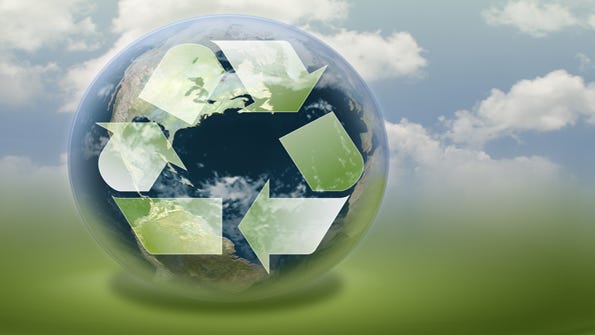
earth-recycle-symbol-atmosphere.jpg
Currently, there is a shortage of end markets due to commodity prices and the continuous moves from China, which banned a number of imports earlier this year and put into place a 0.5 percent contamination standard. It’s important that the industry starts to create a demand for recycled materials, and once those end markets are established, more companies have a reason to incorporate more recycled materials into their packaging and products.
“One of the biggest challenges about getting brands and companies to utilize recycled materials in their packaging and products is how particular they are,” explained Cramer. “Some claim the material isn’t the right color for them, and that is one of the reasons why we are working on a design for recycled content guide. We are trying to break through the recycling myths about using recycled plastics for a brand audience, and I think marketers hold the power there because they can help reconceptualize what consumers want and need by using their purchasing powers to educate consumers.”
This trending topic goes hand-in-hand with the push to reduce the use of single-use plastics, which is a global effort.
Reducing the Use of Single-use Plastics
It’s really no surprise that Collins Dictionary has chosen “single-use” as its 2018 word of the year. The term is used often, and many bans have recently been put in place for single-use items like plastic straws, stirrers, bags and cutlery. In addition, companies around the globe have announced commitments to phase out the use of many single-use products.
“Everyone uses the term ‘single-use,’ and it’s really a conversation diverter,” said Russell. “If we are going to aim high and be aspirational about fixing broken systems, we have to talk about designing systems that manage all of our waste. Sure, we can create bans for things like plastic bags and straws, but those items only make up part of the waste stream. The issue is bigger than that, and we need to have a systemic approach about how things that can be used one time can be reused.”
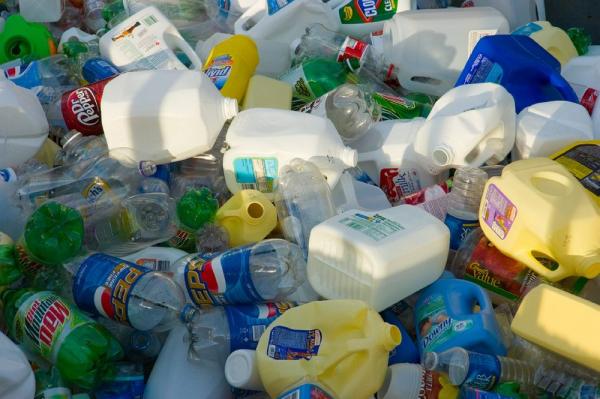
plastic-bottle-recycling.jpg
Manufacturers and companies around the globe are starting to generate ideas to reduce the production of single-use products. And while consumers appreciate the convenience and ease of single-use items, they may need a helping hand in making decisions about their product choices.
“I appreciate single-use and think it’s important for certain things, but we’re not going to solve the problem by trying to change the behavior of more than 5 billion people,” stated Ack. “What we really need to do is what I refer to as ‘choice editing,’ which is essentially the act of taking away the choice of single-use plastic and not trying to force consumers to make a choice on their own. Give them sustainable choices and take the ones that aren’t sustainable off the table.”
More and more consumers are becoming aware of the problems surrounding single-use plastic, and they are starting to pay more attention to which companies are promoting sustainability and making moves to reduce waste.
“Instead of channeling our efforts toward creating the next best photo app, we need to channel those efforts toward solving some of our world’s biggest problems, such as plastic waste,” added Ack. “We are moving to a world that demands a decarbonized economy, and it’s our role to lead those efforts.”
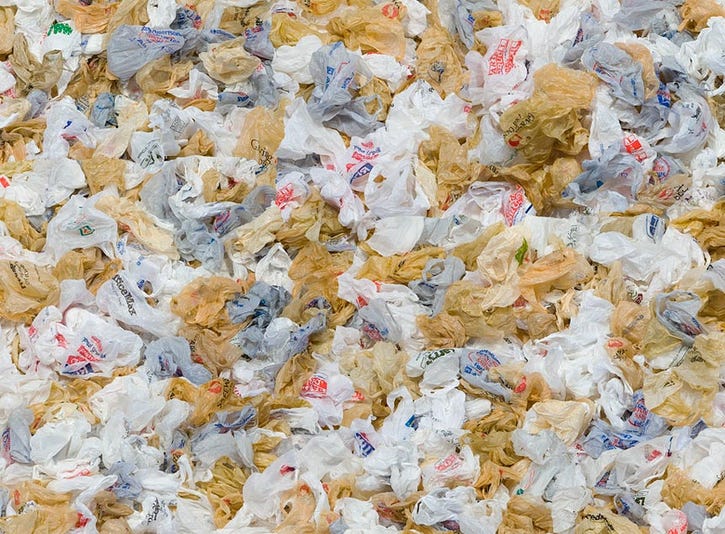
Countries across the globe are listening to some of those demands and going as far as banning certain single-use materials. France, for example, has banned plastic bags, and in 2020, will extend its ban to include plastic plates, cups and utensils. And on December 19, the European Parliament and the Council of the European Union reached an agreement on a ban of single-use plastic products, inching closer to the ban becoming a reality.
“I think we are in a weak moment for real intergovernmental agreement at a global level, but we are seeing a bubbling up from developing countries as political leaders are paying more attention to these issues and starting to realize their political future is at stake,” stated Hendrie. “There are 60 countries globally that have enacted some sort of ban or regime to regulate single-use plastics, and while I don’t think there is a moment right now for an intergovernmental ban, the debates amongst political leaders are starting to become more and more focused on regulations and solutions.”
While efforts are being made overseas, some municipalities within the U.S. have also passed their own legislations and regulations. Examples include Boston, Seattle, a number of cities in California, among others.
“When I heard about the single-use plastic ban in California, the first thing that came to my mind was ‘what am I going to use to roll out tortillas and keep everything from sticking together while I am smashing and rolling?’” said Romero. “It’s just something my culture does, and I think the plastic problem is really a problem of privilege in a lot of ways. There’s some income disparity to this problem as well, and there are a lot of people who do save and reuse items like butter containers.”
At a time where awareness about plastic waste is on the rise, and everyone is working toward a common goal of reducing waste and using less plastic, a call for behavior change is also in order. Many people and companies often send plastic recyclables to landfill due to contamination or confusion at the bin, and industry leaders and product manufacturers are trying to overcome those challenges via education.
Advocating for Behavior Change Via Education and Regulation
There is no uniform method for recycling, and each municipality handles recycling differently. Because of this, people often get confused about what can and cannot be recycled. And with more municipalities making changes about what materials they can and cannot accept due to low commodity prices and lack of end markets, confusion levels are increasing.
To change consumer behavior, there needs to be more consumer options, according to many roundtable attendees. Step one should be to ensure consumers can actually recycle certain materials in their municipality, and step two should be to determine if they will actually make the effort to recycle the materials if given that option.
Consumers often want to do the “right thing,” or the “green thing,” but they don’t want to have to change their behavior in a way that restricts them from making use of products they use regularly. For example, if a product used to be packaged in a can and now it’s packaged in a pouch, it’s important for the consumer to know if that pouch can be recycled.

“There’s a lot of stress on consumers, and as a mom, I am already trying to figure out the chemicals in the sunscreen and so many other things,” stated Romero. “Government agencies and municipalities need to work with companies and manufacturers to make sure that products can be recycled and that there’s an easy way for consumers to know if those products are in fact recyclable in their area.”
Education is key to improving recycling and reducing contamination, and some are targeting younger generations to start best practices early.
For example, some schools are handing out refillable water bottles and ditching plastic water bottles. And some are incorporating recycling education into curriculums.
“There’s an investment that needs to be made at the very beginning and that’s with young people,” said Martin. “We have a lot of young people thinking about recycling and redesigning products, and we need to invest in them because they will be sitting at this table years from now planning our future.”
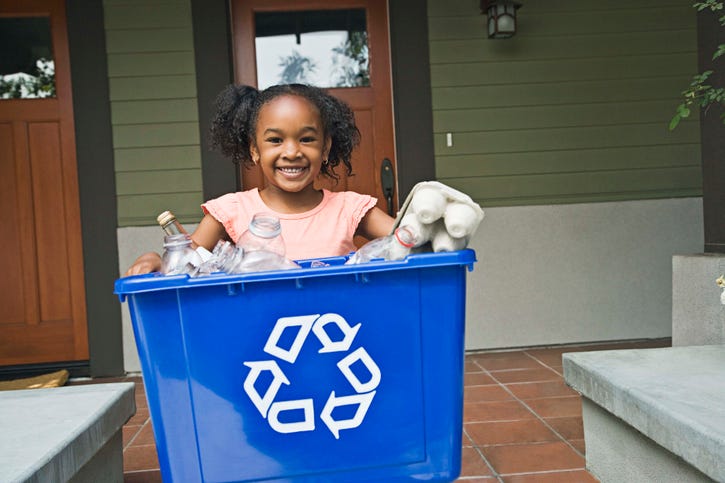
In addition to consumer education, there are also regulatory solutions that are starting to become more prominent as recycling levels remain stagnant around the world.
“You can educate and push to change behavior amongst consumers, but at the end of the day, you still have products you have to deal with at the end of their lifecycle,” stated Russell. “We have a lot of recycling facilities that were designed in the 1970s, and we need to upgrade those facilities to meet the needs of today and the future. Facilities are struggling with contamination and lack of end markets, and if you are just sorting and processing materials that have no demand, you really aren’t helping the problem, and you can actually lose money in the process. We can educate people about recycling, but it’s important that the materials can actually be recycled when they enter recycling facilities.”
In addition to ensuring facilities can handle materials, it’s important that the industry develops more domestic infrastructure, especially as the next wave of China’s National Sword regulations take effect in 2019.
Pushing for More Domestic (and International) Infrastructure
In February, the Trump administration released a 53-page infrastructure plan, outlining its proposal for rebuilding America’s infrastructure. The proposed plan, which is one of the largest to be released by the White House, has some similarities to Australia’s infrastructure plan, which has been proven successful.
The plan includes details on providing better access to education and workforce development, repairing and expanding transportation infrastructure, streamlining the permitting process by creating a new, expedited structure for environmental reviews and so on, but it’s missing a major component: recycling.
“If we want to continue to use plastic in the world, we need to get a grip and invest billions into recycling infrastructure,” stated Cramer. “We need to collect that material before it goes into the environment and have the capability to turn it into something new. Some business models out there are good for the short term, but we need to start thinking about the long term.”
“I understand that the lack of value attributed to materials is one of the main reasons why materials are going to waste and not being managed properly, but we really need to take action now before things worsen,” added Cramer.
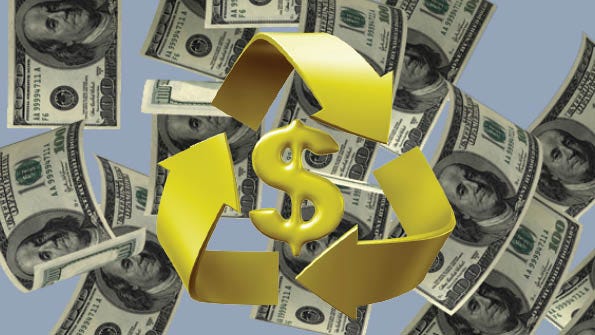
According to Harrison, access to good, consistent, high-quality feedstock to make into new products is at the top of the list for manufacturers’ needs. And including funding for improved recycling in the infrastructure plan is a way to ensure long-term reliable supply created in the U.S. and to help communities provide universal recycling access to their households through the procurement of recycling carts, trucks and other equipment also made in the U.S.
“I am interested in when there’s going to be a shift from reactive recycling to proactive recycling,” said Harrison. “There are a lot of entrepreneurial geniuses in the world who look around and find piles of material to turn into a competition for virgin feedstock. That is a reactive solution, and we can’t just wait for those solutions to happen. We must drive those solutions and keep those ideas in motion.”
Adding to Harrison’s thoughts, Hendrie said, “There is a lot of downstream recycling infrastructure in this country, and even if we solve some of the infrastructure problems, production is still on the rise. We need to somehow bend that curve upstream instead of just putting band-aids on the problems.”
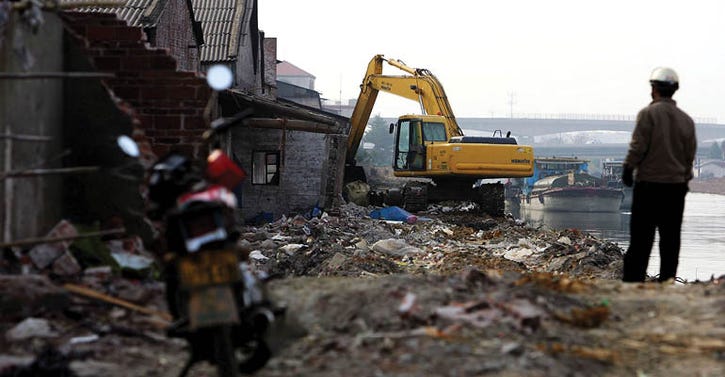
While a main focus has been on figuring out ways to develop more domestic infrastructure, there’s also a need to improve international infrastructure.
For a long time, China accepted recyclable materials from a number of countries, including the U.S., and much of that was contaminated. And now, with the country no longer accepting a number of imported materials, the pressure is put on other countries to better manage their uptick in imports.
In areas like Thailand, Vietnam and Malaysia, for example, the amount of imports has been overwhelming. And in response, the countries have put in place their own bans on imports of foreign scrap plastic.
“The reason why production is going up and facilities aren’t being built is because the population is going up, and everyone is trying to figure out how to feed, clothe and educate people in addition to keeping them healthy,” stated Russell. “People deserve to have access to food and clean drinking water, and at some point, we need to have an honest conversation about how we will accommodate that infrastructure.”
As we round the corner to 2019, there is a clear need for infrastructure development and improvement across the globe. And according to nearly every attendee of the roundtable, it’s going to take a group effort to make these changes
About the Author
You May Also Like




.png?width=300&auto=webp&quality=80&disable=upscale)